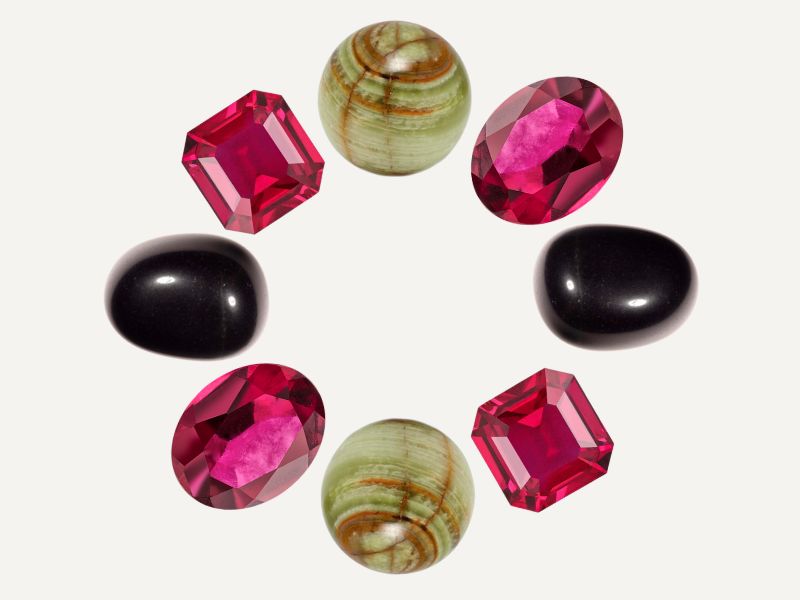
July’s Gemstone: Ruby vs. Onyx
Share
Back in 1912, the American National Retail Jewelers Association got together in Kansas and decided to make things official—each month would get its own designated gemstone. For July, they picked ruby.
But what about before that? Things weren’t so straightforward. According to George Kunz, America’s first gemologist and a Tiffany & Co. vice president, the choice of birthstones used to vary depending on the culture. In his 1893 research, he found that onyx was traditionally linked to July in Jewish, Roman, Spanish, and Italian traditions. Meanwhile, carnelian was the go-to stone in Arab cultures, and in Polish and Russian traditions, it was actually ruby all along. And if we go way back to Aaron’s breastplate (which supposedly inspired the idea of birthstones in the first place), early biblical translations suggest that sapphire was originally tied to July.
So why did ruby end up as the winner? Simple—it’s flashier, more expensive, and an all-around more marketable gemstone. Onyx, on the other hand, has plenty of variations and isn’t as commercially valuable.
That said, onyx is still fascinating in its own right. It’s a type of chalcedony, and its unique semi-translucent structure forms parallel layers in different shades—white, green, red, and even jet black (which is actually the rarest and most sought-after). The black onyx in particular has a mysterious reputation. In Arab folklore, it’s known as el jaza, or “the stone of sadness.” But at the same time, rulers, military leaders, and wealthy merchants have been carrying onyx talismans for centuries. It’s said to bring strength, focus, and determination, helping its wearer stay clear-headed and composed.
In Indian astrology, onyx is even more complex—its properties shift depending on the color and planetary associations. And in Islamic culture, onyx is believed to have strong spiritual properties, including:
• Protection from negativity – It’s thought to shield against the evil eye and ward off jealousy.
• Emotional stability – Onyx is said to help balance emotions and provide clarity.
• Religious significance – In some traditions, onyx is used to craft prayer beads (tasbih or misbaha), which believers use during prayers.
Compared to all that, ruby has a much simpler, more universal symbolism. It’s considered the stone of the Sun, radiating confidence, leadership, and strength. Wearing a ruby is believed to boost self-assurance and help people thrive in society.
At the end of the day, whether you go for onyx or ruby, it’s all about what resonates with you. Every gemstone has its own energy, so take your time, explore its properties, and trust your intuition.



